History of the Lake Geneva Regatta
In the last issue of Skippers, historian and Toucan class president Christophe Vuilleumier reported on the tentative beginnings of Lake Geneva regattas in the 19th and early 20th centuries. In this second part, he describes how the regattas spread to the whole of Lake Geneva and became a tradition. A look back at a chain of events that led to the Lake Geneva regattas being declared part of Switzerland’s intangible cultural heritage.
As the first part of the historical outline has made clear, the port of Geneva can confidently be described as the cradle of the regional and national regatta tradition. The reasons for this lie partly in the centuries-old nautical tradition and partly in the wealthy patrician class, which underpinned its elite social position through sailing. Towards the end of the 19th century, the Geneva example was imitated in Vaud and France.
The regatta tradition takes shape
One of the oldest records of official local regattas dates back to 1880, when the Société de Navigation de Rolle, renamed the Société Nautique Rolloise five years later, was founded. Its statutes stipulated that all sailing boats, regardless of their rigging, were permitted to take part in the races. The regatta activities of the Société vaudoise de navigation, usually just called “La Nana”, which was founded in 1846, go back even further. It initially concentrated on rowing competitions and, judging by the oldest documentary reference, did not organize sailing competitions until 1854. Evian followed suit in 1889 with its first regatta program. However, only boats from the Société Nautique de Genève took part in the premiere. The owner of the winning boat, Eva, received a vase from Sèvres donated by the President of the French Republic. Two other prizes went to Thétysand Grèbe. They were each awarded a medal by the Yacht Club de France for the “beauty of their maneuvers”.
In June 1902, the Société Nautique de Genève and the Société de navigation vaudoise laid the foundations for many years of cooperation in a spirit of competition, solidarity and friendship with the Grand-Lac-Cup in Ouchy. A steamboat from the Compagnie de navigation towed fifteen Geneva sports boats into the port of Lausanne, where the convoy was greeted by artillery salutes and cheers from the numerous spectators. The members of the various clubs not only competed against each other on the water, but also met for a meal and thus strengthened their relationships, which in turn contributed to the further development of the competitions. The Association des clubs nautiques du lac Léman, which brought together the rowing clubs from the region, had been cultivating this friendly sporting spirit for some time.
By 1906, the trend had also arrived in Morges. The town on Lake Geneva organized regattas through the Amis de la navigation association, predecessor of the Club nautique de Morges, and achieved phenomenal success. A year later, their initiative to start six race series in one day was greeted with great enthusiasm by the sailors from the Swiss shore of Lake Geneva.
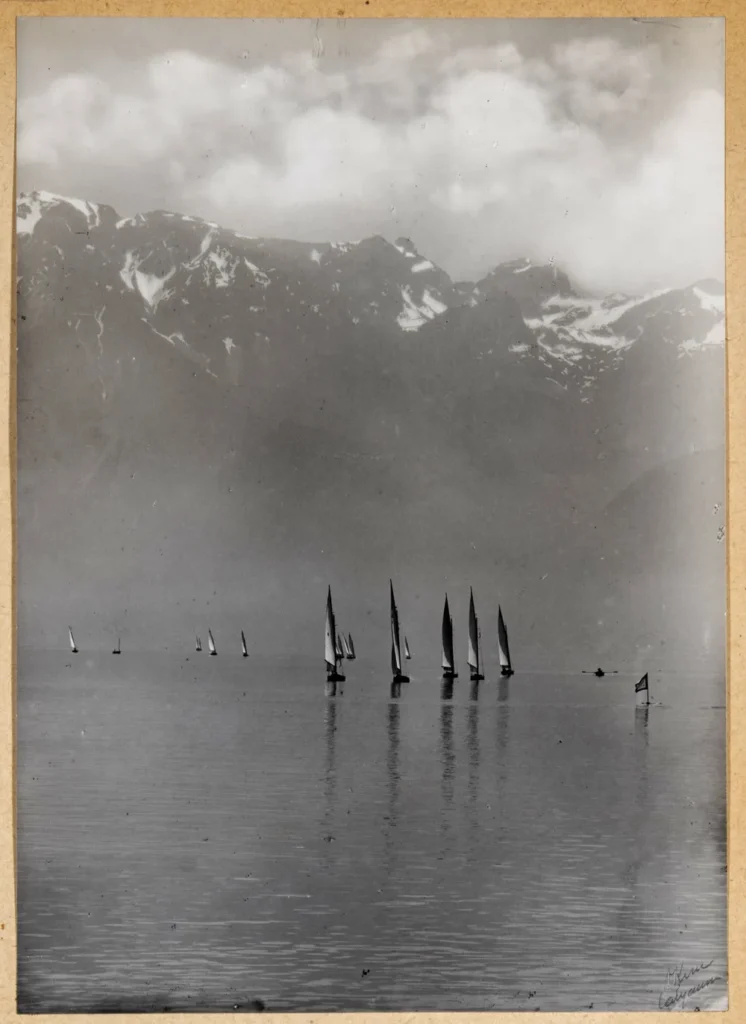
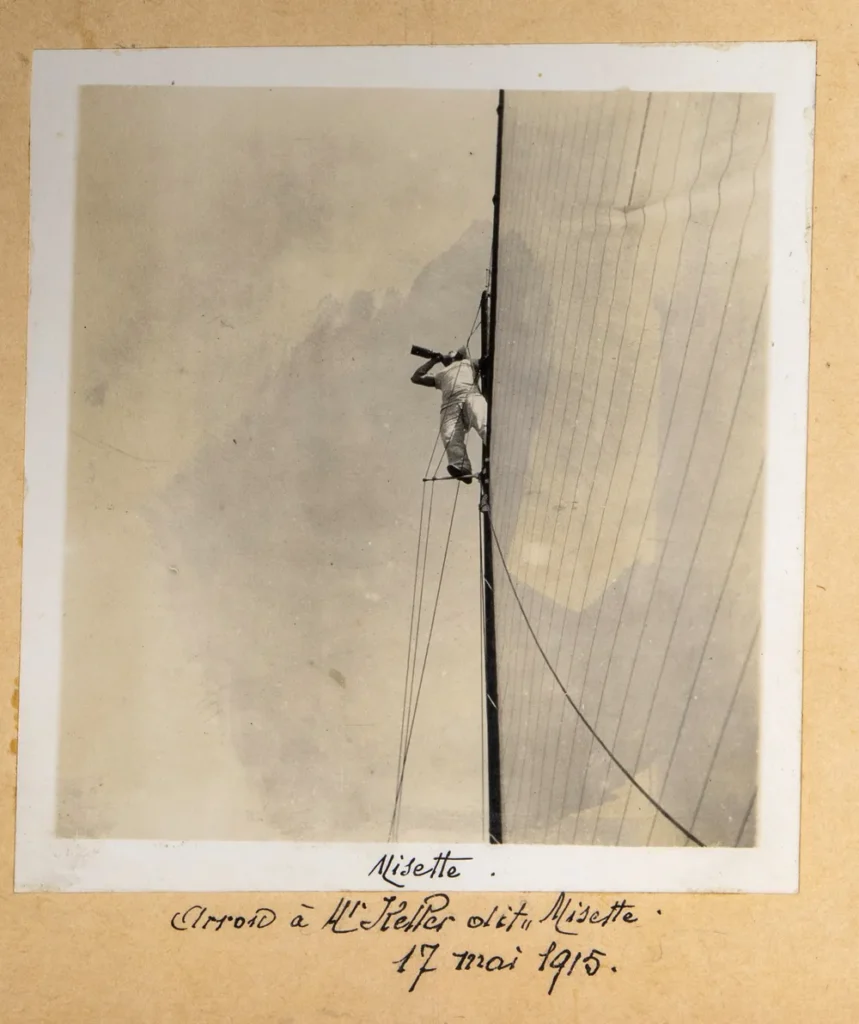
DES FACES PALES, 1915 ©Musée du Léman
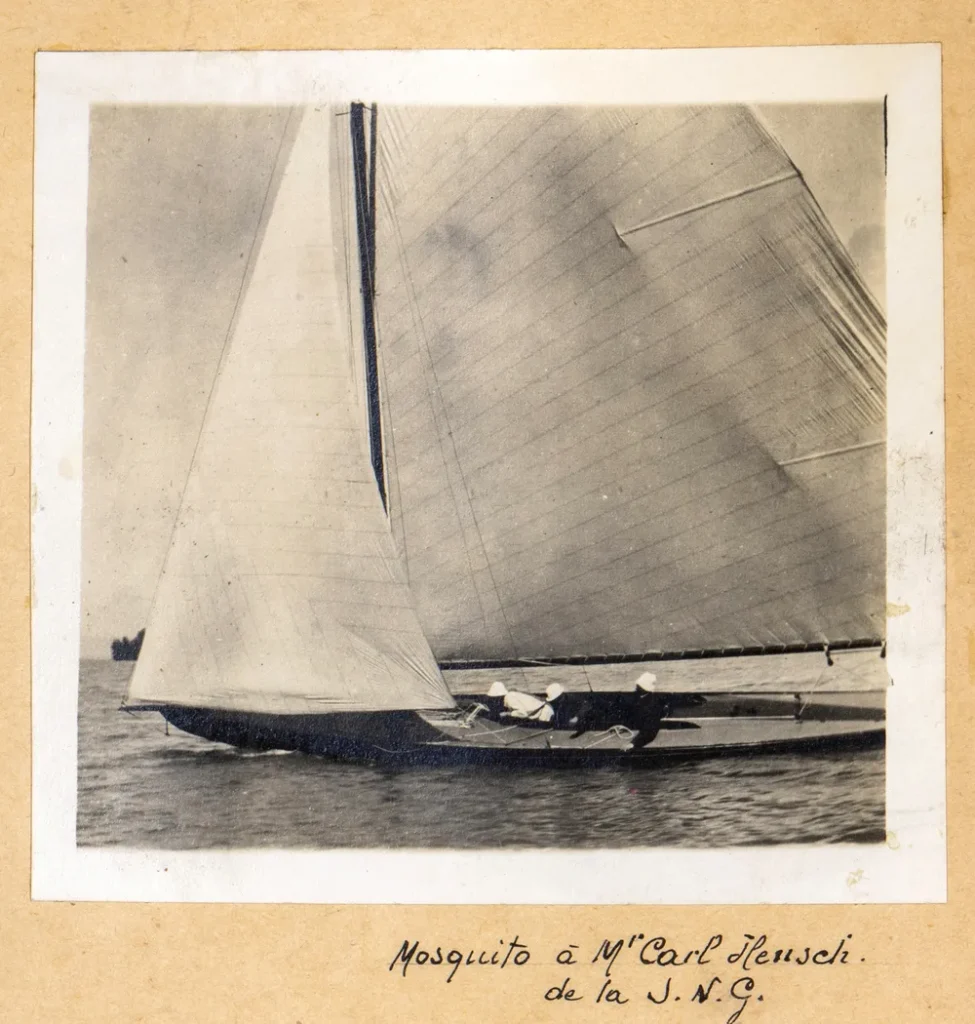
The Croisière Eynard, forerunner of the Bol d’Or
Léopold Eynard was not unaware of the euphoria surrounding the sport of sailing around Lake Geneva. Always on the lookout for new challenges, he seized the opportunity and created a new type of competition in 1916: a stage regatta around the lake. The idea was revolutionary for the time. Nobody wanted to burn their fingers in front of him, there were too many risks involved in such a long regatta. But Eynard was not impressed – and he was proved right: The regatta was a complete success. It was a welcome distraction in the gloomy times when the turmoil of war in Europe and the economic crisis were dampening the mood. In the same year, sailors from Morges came together to form a genuine sailing club, following the example of the Geneva Société Nautique. A nautical club was founded in Vevey in 1917, followed by Lausanne in 1919 and the Société Nautique du Léman Français in neighboring France in 1921.
The Croisière Eynard, named after its founder in 1922, developed rapidly. It was soon joined by boats from all shores of Lake Geneva: 30-meter skerry cruisers, hoccos, lacustres, 6-meter, 6.50-meter and 8.50-meter boats. The public became increasingly numerous and also showed more and more interest because some boat classes became Olympic.
In addition to the wealthy skippers who raced in the clubs at the beginning of the 20th century, less wealthy but at least as passionate sailors took their fate into their own hands and founded the Société d’encouragement à la navigation de plaisance in 1917. To set an example, the association organized a regatta in the Lake Geneva basin. Inspired by its success, it followed up in 1918 with two regattas – one in Geneva, the other in Creux-de-Genthod – a regatta in Bellerive and an intercantonal race with the help of the Club nautique morgien and the Société nautique de Rolle, which had been founded two years earlier.
In 1920, the Société d’encouragement à la navigation de plaisance already had 170 members and 132 sailing boats, for which it put together an ambitious program consisting of five annual regattas, a women’s regatta and an intercantonal regatta to which all the clubs of the upper lake basin were invited. Not only did it later give rise to the Yacht Club de Genève, it was also the forerunner of the later Association des Clubs de Voile Lémaniques (ACVL), which was founded in 1948 within the Société Nautique de Genève as the Conseil des Clubs de Voile du Léman.
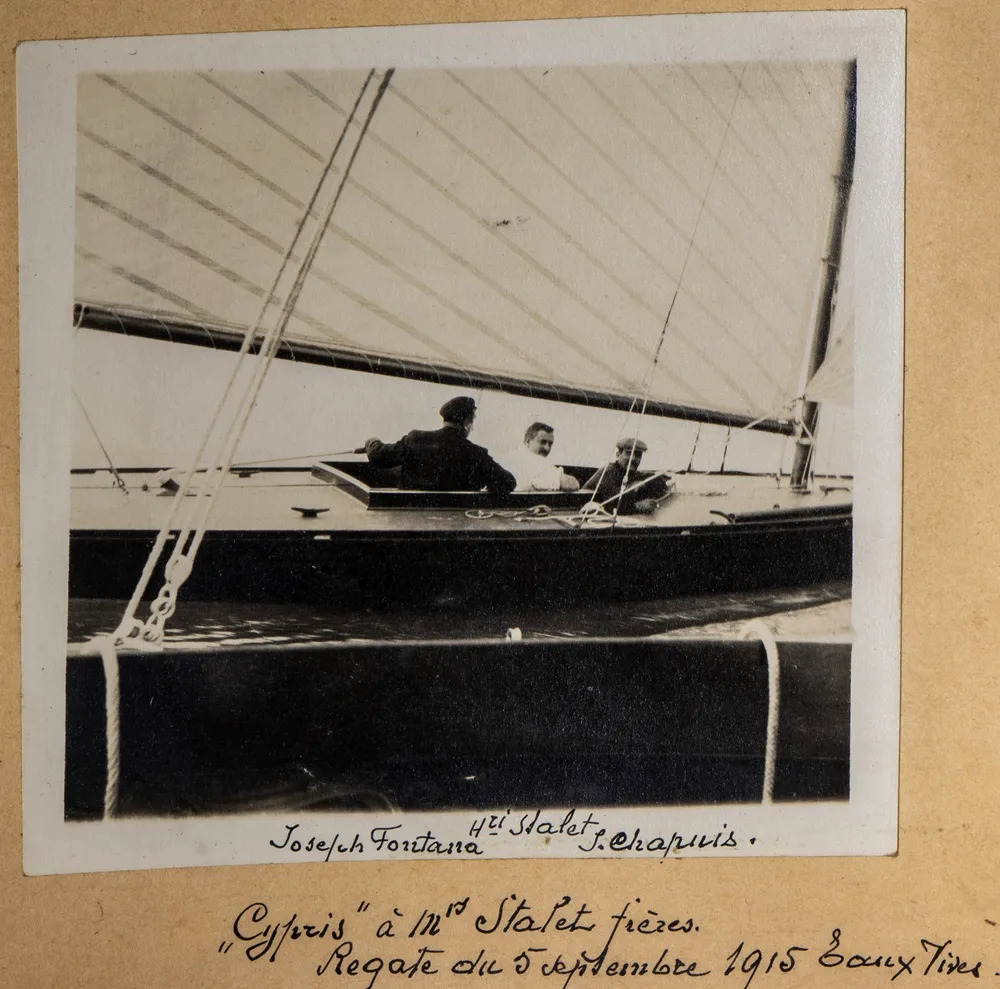
BEFORE EAUX-VIVES, 1915 ©Musée du Léman
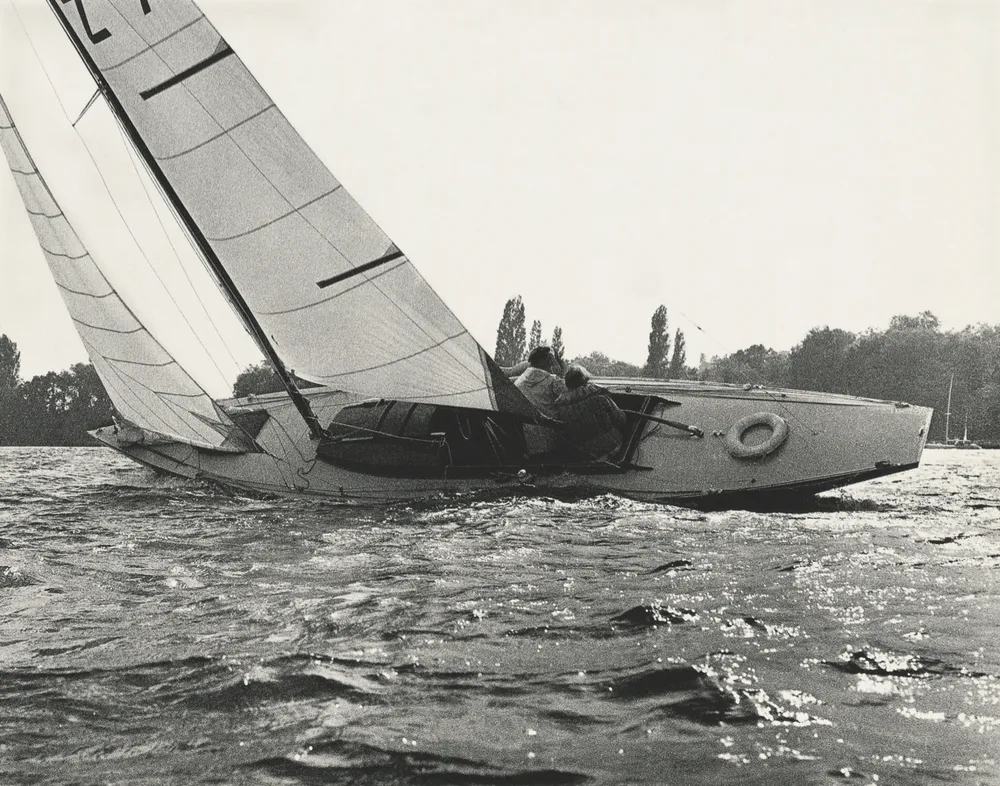
Regatta fever is spreading
It is simply not possible to list all the regattas that have been held on Lake Geneva for almost 150 years for reasons of space. Some races, often named after their patron, were short-lived and were quickly forgotten, such as the Coupe de Plongeon, which was sponsored by a certain Mr. Morsier in Port Noir in 1910, or the Robert Marchand, Zani, Gallay and Lagier Coupes, which were all sailed off the Quai des Bergues in the summer of 1918. Others may not have lasted much longer, but they are still remembered, especially the 1894 Fête navale in Nyon, where the boats were divided into five classes based on their measurements.
The first regatta weeks were organized in 1912. In Geneva, the winners were Pictet de Rochemont on Calypso in the three-ton class, Hentsch on Fly in the two-ton class, Perrot on Quo-Vadis in the 6.5 class, Guy de Pourtalès on his cruiser L’Epervier and Chenevière and Bates on the cruiser Gigolo.
The Cercle de la voile became the driving force on Lake Geneva, largely thanks to its presidents Auguste Bordier, Charles-Constant Hentsch, Jean Mirabaud, Maurice Pictet de Rochemont, Eugène Corte and Charles Bine. As respected yachtsmen, they spared no effort to advance the sport of sailing. In the 1920s, regattas became important social events, attended by everyone who was anyone. The Geneva club maintained close relations not only with all the water sports clubs that had formed around the lake, but also with the Zurich Yacht Club and the French clubs on the Mediterranean. When international relations between France and Switzerland resumed in 1920 after the end of the war, including in sailing, two Swiss men registered for the regattas in Cannes and Nice: Blum from Zurich with the Agon III and Grisel from Geneva with the Mahoun II. Both 8.5s were designed by Joseph Guedon and built in Corsier. In the same year, the regatta calendar consisted of nineteen competition days. They included a regatta-style cruise between Geneva and Evian, the international regattas of Evian, the Régate de Coudrée on August 1, the Creux-de-Genthod sailing week from August 2 to 8 and the intercantonal regatta. There was also the Prix Léopold Eynard from August 17 to 23, several local regattas in Morges at the end of August and the women’s regatta on August 28. A packed program that was completed by the entire fleet of the Cercle de la voile at the time. And it consisted of almost sixty racers! The Geneva club provided two five-ton boats, one four-ton boat, four three-ton boats, three cruisers, two 7-ton boats, four 12-ton boats, nine 8.50-ton boats, twenty-three 6.5-ton boats, three 5-ton boats and six dinghies.
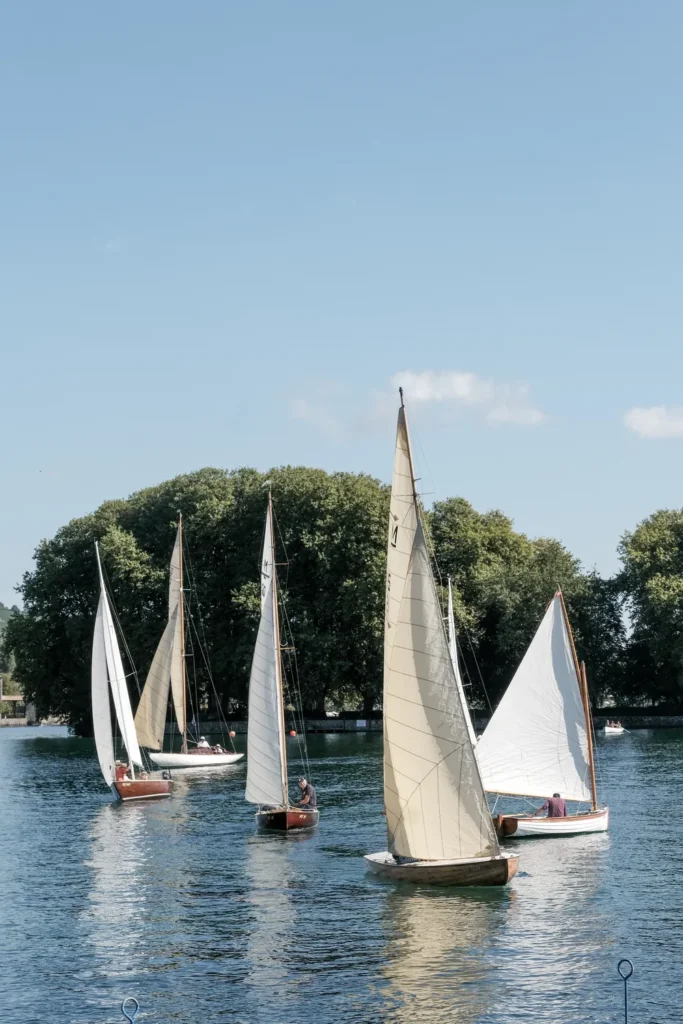
©Philippe Cailler
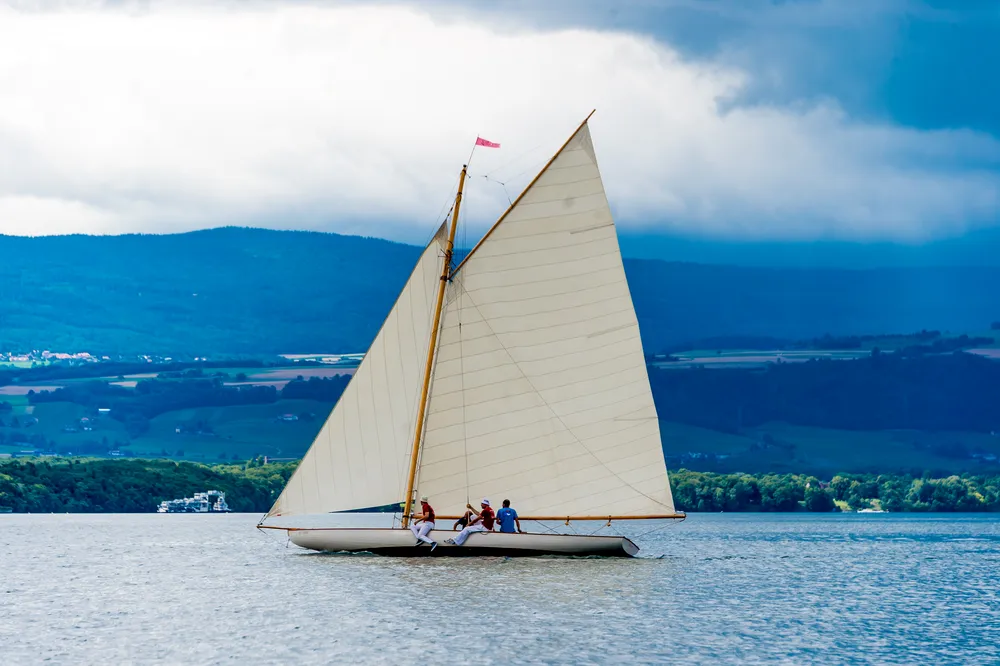
The beginnings of the Bol d’Or
As the sport of sailing became more widespread, the need for an umbrella organization also grew. The Union Suisse du Yachting was therefore founded in Thun in 1939. In the same year, the Bol d’Or celebrated its premiere on Lake Geneva. The initiators of this unique regatta were six sailors from the Club nautique des Faces Pâles, led by Geneva doctor Pierre Bonnet, then president of the Yacht Club de Genève. They took up the idea of a regatta that had taken place forty years earlier: on August 20, 1900, several boats had set off from Versoix and set course for Le Bouveret in Valais. As they did not want to sail at night, they stopped at the end of the lake at nightfall and did not continue their journey until the next morning. In the end, J.W. Bennett won on Sarina.
Convinced that a regatta as long as that of 1900 should be feasible with a little preparation, Pierre Bonnet and his friends organized a test race in 1937, which led from Geneva via Nyon and Yvoire back to Geneva. The following year, they launched an even more challenging format with the 12 heures du Léman. In 1939, they raised their ambitions once again. Together with twenty other participants, this time they were to race non-stop from Geneva to Le Bouveret and back. Hardly anyone could have guessed at the time that this sailing marathon would have such a long life.
For more than eighty years, the 125-kilometer course remained unchanged. The only exception was during the Second World War, when Swiss boats were not allowed to cross the border. From 1949, the Bol d’Or was organized by the Société Nautique de Genève. It attracted more and more top sailors from all over the world to Geneva. Within a few years, the long-distance race established itself not only as a classic of international standing, but also as an important test bed where ship designers and engineers could test their innovations developed for international sailing. It has been regarded as the ultimate testing ground for innovations since 1970 at the latest, when the 75er archipelago cruiser Margot II, built in 1912, was the last time a “classic” sailing yacht won the long-distance regatta. From 1971 onwards, the arms race was unstoppable. That year saw the start of the Toucan’s winning streak, which remained unbeaten until the end of the decade.
In the 1980s, the Toucans were replaced by multihulls. Most of them came from Swiss boat builders, who could count on the support of research institutes such as the EPFL and turned their inventions into prototypes. This not only benefited the national sailing sport, but also the offshore scene. Probably the most famous example is Alinghi. Ernesto Bertarelli’s syndicate used the momentum of industrial research and development in boatbuilding that had emerged from the centuries-old tradition of Lake Geneva regattas to bring the prestigious America’s Cup to the Société Nautique de Genève in 2003 and 2007.
The Bol d’Or has become the barometer for the 200 or so regattas held on Lake Geneva today. They all base their calendars on this classic event. These include the Challenge Rippstein, launched in 1958, the Coupe de la Harpe, first held in 1976, the Régate des Vieux Bateaux and the Translémanique en solitaire, in which boats of all ages take part. They are living testimony to the centuries-old tradition and have become an integral part of the Lake Geneva landscape.
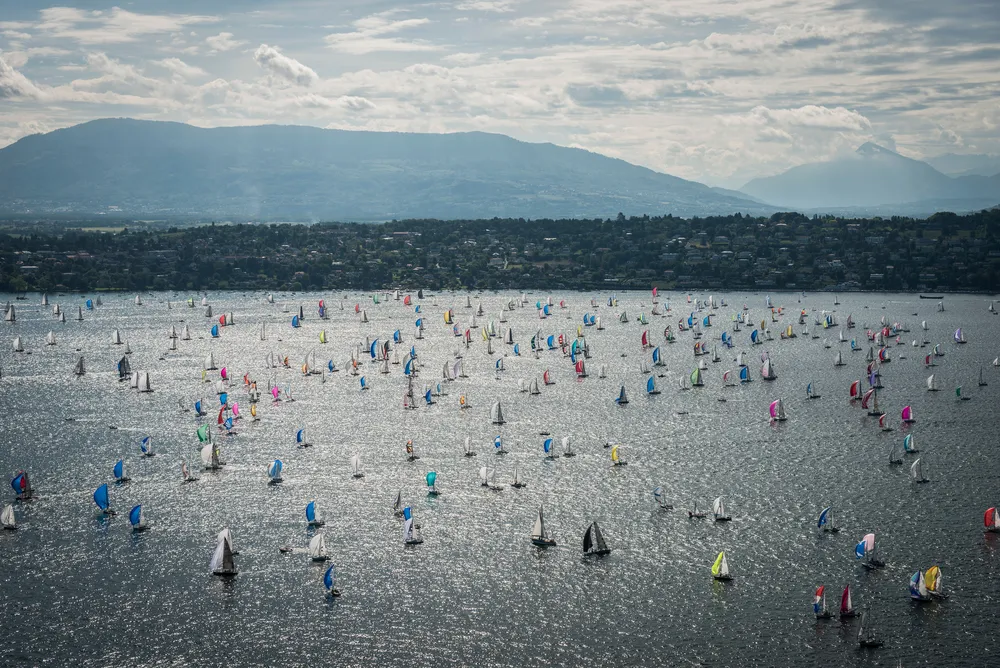
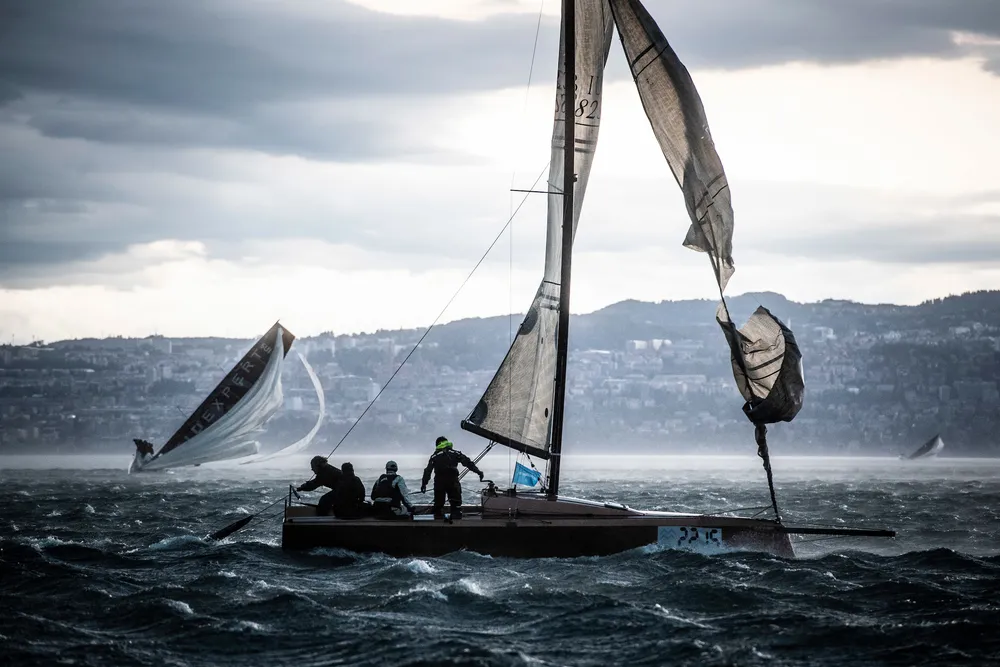
A MEMORABLE EVENT. ©Loris von Siebenthal


